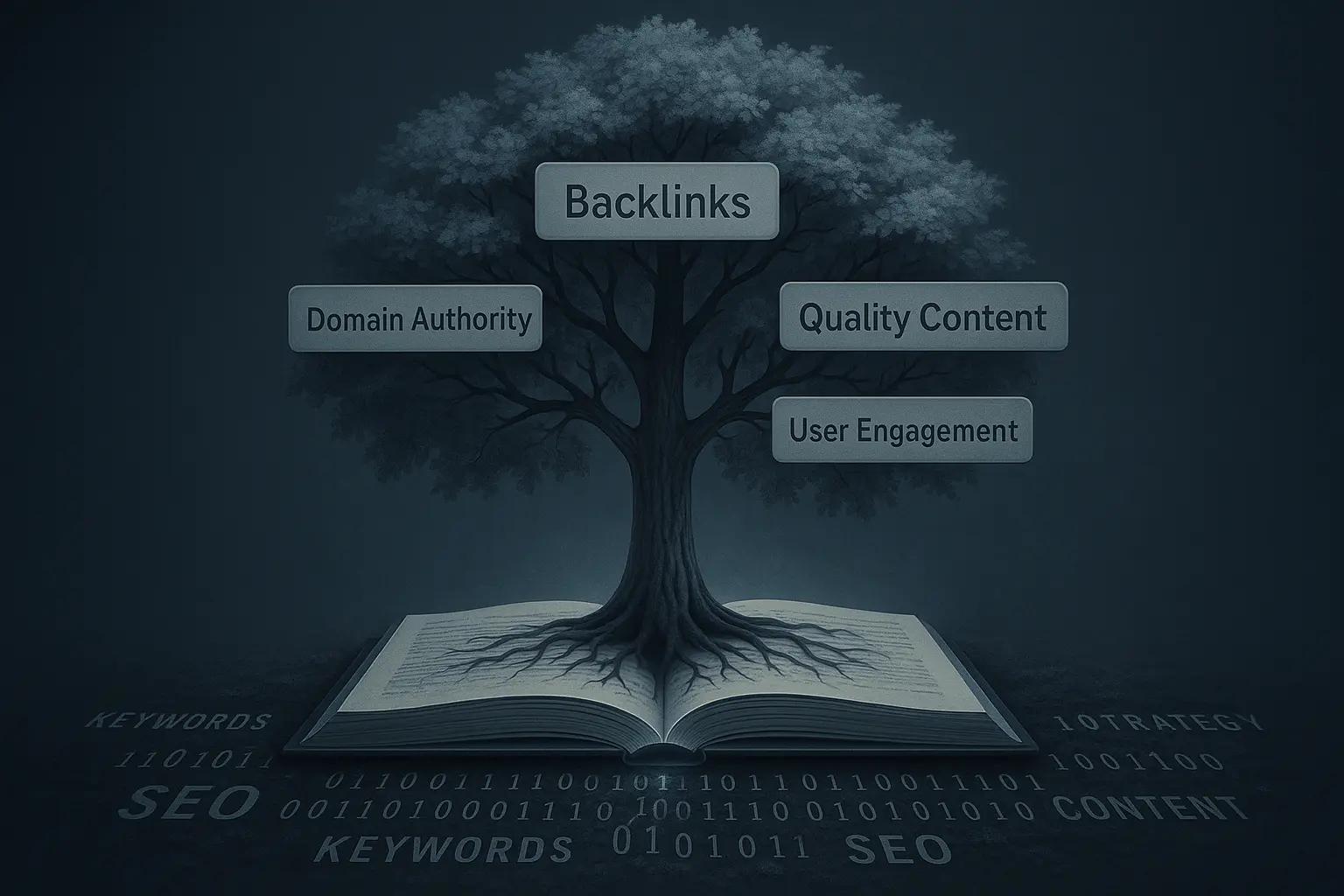
Blogging for SEO is key in today's digital marketing world. It helps businesses get noticed online. Websites that keep posting high-quality content get better rankings and more visitors.
Creating content is now a big part of digital marketing. SEO focuses on making blog posts that are useful and answer questions. Blogs connect what people need with what search engines look for.
Good websites know that SEO is more than just keywords. They make blog posts that really talk to their readers. This helps brands become leaders in their fields.
Key Takeaways
- Blogging drives organic search visibility
- Quality content trumps keyword stuffing
- Regular blog posts improve website authority
- SEO strategies evolve with content quality
- User-focused content ranks higher
The Power of Blogging in Modern SEO Strategy
Blogging has grown from a simple online diary to a key part of content marketing. Today, digital marketers see blogs as powerful tools. They help improve search engine visibility and connect with target audiences.
Good digital strategies include blogging as a main way to boost online presence. Blogs let you show your expertise, answer questions, and connect with potential customers.
Understanding the SEO-Blogging Connection
Search engines favor websites with fresh, high-quality content. Blogs are great for:
- Creating new content
- Targeting user experience signals
- Improving site crawlability
- Building domain authority
Impact on Search Engine Rankings
Regular blogging boosts search rankings through smart content marketing. By making valuable, keyword-rich articles, websites can:
- Get more organic search visibility
- Build credible backlinks
- Show they know their topic well
Core Benefits Overview
Analytics show blogging's big impact. Websites with regular, quality blog posts often see:
"Content is king, but strategy is the kingdom." - Digital Marketing Insight
- 35% more organic traffic
- 50% longer site visits
- Better user engagement
Adding blogs to SEO strategies changes digital marketing. It makes brands and audiences connect in meaningful ways.
How Regular Blogging Drives Organic Traffic
Blogging is a key way to get more organic traffic and improve your search engine ranking. By making regular, high-quality content, you can draw in more customers through search results.
There are a few important things to focus on for successful organic traffic:
- Make content that meets user intent
- Use strong on-page optimization methods
- Stick to a reliable posting schedule
- Target what your audience needs
"Content is the cornerstone of digital visibility. Regular blogging transforms your website from a static platform to a dynamic resource." - Digital Marketing Experts
The power of blogging is in showing search engines you're relevant. Every new post is a chance to rank for keywords, answer questions, and show your expertise.
Good on-page optimization includes:
- Write catchy, keyword-rich headlines
- Use detailed meta descriptions
- Add internal and external links
- Make sure it looks good on mobile
By focusing on what users want and posting valuable content, your blog can become a strong tool for attracting and converting customers.
Blogging for SEO, SEO Content, SEO Strategies: A Complete Guide
Creating a good SEO strategy for blogging needs a mix of technical skills and creative writing. Digital marketers know that blogging is more than just writing. It's about making content that search engines like and that people find useful.
Content Creation Best Practices
Starting with good keyword research is key to making great SEO content. Bloggers need to understand what people are searching for. The main steps in creating content are:
- Doing deep keyword research with advanced tools
- Looking at how often people search for things and how competitive it is
- Writing detailed content that answers questions
- Keeping your writing clear and interesting
Strategy Implementation Tips
Having a solid site structure is important for technical SEO. Bloggers should work on:
- Organizing content in a logical way
- Using clean, easy-to-understand URLs
- Improving how content links to each other
- Making pages load faster
"Great SEO is about creating quality content that search engines can understand and users want to read." - Digital Marketing Expert
Measuring Success Metrics
Keeping track of how well your blog does is important. Look at things like how many people visit, how long they stay, and how many convert. Use analytics tools to see how well your content is doing.
Building Domain Authority Through Quality Blog Content

Domain authority is key in search engine optimization. It shows how credible and ranked your website is. Creating top-notch blog content is a strong way to boost this important SEO metric.
Good content marketing means making blog posts that grab attention and get backlinks. By making content that really helps readers, websites can grow their domain authority over time.
- Develop in-depth, original content that addresses specific user needs
- Create comprehensive guides and expert-level articles
- Consistently publish relevant and engaging blog posts
When your content is truly valuable, link building becomes easier. Search engines see and reward websites that show they know their stuff through well-researched blog content.
"Quality content is the cornerstone of building domain authority in the digital landscape." - SEO Expert
Here are some strategies to boost domain authority:
- Research trending topics in your industry
- Analyze what your competitors are doing
- Do thorough keyword research
By always making valuable content, you tell search engines your site is a go-to in your field. Keeping high standards and focusing on user experience helps improve domain authority and search rankings.
Targeting Long-Tail Keywords Through Strategic Blogging
Bloggers need to learn how to target long-tail keywords to boost their search engine ranking. These specific phrases help reach a niche audience and improve search results.
Long-tail keywords are detailed search queries with lower competition but higher conversion rates. They allow content creators to meet specific user needs.
Bloggers need to learn how to target long-tail keywords to boost their search engine ranking. These specific phrases help reach a niche audience and improve search results.
Long-tail keywords are detailed search queries with lower competition but higher conversion rates. They allow content creators to meet specific user needs.
Keyword Research Methodology
Effective keyword research for long-tail keywords involves several steps:
- Use tools like Google Keyword Planner
- Analyze search volume and competition
- Look at related searches and questions
- Study what competitors do
Content Optimization Techniques
Using long-tail keywords requires a careful approach. Natural incorporation is crucial to keep content readable while showing search engines it's relevant.
"The secret to successful long-tail keyword targeting is understanding user intent and providing genuine value." - SEO Expert
Search Intent Alignment
Matching content with user intent makes keyword research meaningful. By answering specific questions and needs, bloggers create targeted content that ranks well and engages readers.
- Understand what searchers want
- Make content that solves problems
- Address user pain points
Creating User-Centric Content That Ranks
Making content that users love and search engines approve is key in today's marketing. User experience is at the heart of successful strategies. These strategies boost engagement and improve search rankings.
"Great content is not about what you want to say, but about what your audience wants to hear." - Marcus Sheridan
To make effective user-centric content, you need a smart plan. It should meet both audience needs and search engine demands. Here are some important points to keep in mind:
- Know what your audience is struggling with and what they're asking.
- Make content that solves problems and answers questions.
- Make sure the information is easy to read.
- Use simple, friendly language.
- Give users something they can do with the information.
Techniques for on-page optimization that improve user experience include:
| Optimization Technique | User Experience Impact |
|---|---|
| Clear Headings | Improves Content Scannability |
| Multimedia Integration | Increases Engagement |
| Mobile-Friendly Design | Enhances Accessibility |
| Internal Linking | Supports User Navigation |
Successful content marketing isn't about tricking search algorithms. It's about giving real value to your audience. By focusing on what users need and delivering top-notch, relevant content, you'll boost your search rankings. You'll also earn the trust of your audience.
Leveraging Blogs for Enhanced Link Building
Link building is key to good SEO. Blogs are great for building strong links that boost your site's ranking.
To succeed in blog link building, you need a smart plan. It should mix SEO know-how with creative writing. The right moves can turn your blog into a link-building leader.
Internal Linking Strategies
Smart internal linking boosts your site's SEO. Here are some tips:
- Create contextual links between related blog posts
- Use descriptive anchor text that provides clear value
- Maintain a logical site structure through strategic link placement
- Prioritize user experience when implementing internal links
External Link Acquisition
Getting quality external links means making content that people want to share. Focus on:
- Producing in-depth, original research
- Creating comprehensive guide-style content
- Developing infographics and visual assets
- Engaging with industry influencers and thought leaders
Link Quality Assessment
Not all links are the same. Check links based on these factors:
- Domain authority of linking websites
- Relevance to your content niche
- Traffic and engagement metrics
- Authenticity and credibility of linking sources
"Quality trumps quantity in link building. One authoritative link can be worth more than dozens of low-quality backlinks."
By using these strategies, bloggers can boost their SEO. They'll attract more search engines and readers.
Mobile Optimization for Blog Content

Digital landscapes have changed a lot. Now, most people use mobile devices to browse the internet. Mobile optimization is key for both technical SEO and user experience.
Creating a great mobile experience is more than just making your site look good on phones. Web developers and content strategists need to make sure everything works well on all devices and screen sizes.
"Mobile-first design isn't just a trend—it's a fundamental requirement for digital success."
- Implement responsive web design
- Optimize page loading speed
- Reduce image file sizes
- Use mobile-friendly typography
Technical SEO for mobile includes:
| Strategy | Impact |
|---|---|
| Accelerated Mobile Pages (AMP) | Faster loading times |
| Responsive Design | Improved user experience |
| Mobile-Friendly Testing | Better search rankings |
User experience is crucial in mobile optimization. Prioritizing readability, intuitive navigation, and quick access to content will boost your blog's mobile performance and search engine visibility.
Using Analytics to Measure Blog Performance
Knowing how well your blog does is key for good SEO and content marketing. Analytics tracking gives you deep insights into your content's success with readers and search engines.
Top bloggers make smart choices based on data. With the right analytics tools, you can learn a lot about your blog's success.
Key Performance Indicators to Watch
- Organic traffic volume
- Average time on page
- Bounce rate
- Page views per session
- Conversion rate
Essential Traffic Analysis Tools
Digital marketers use strong analytics platforms to track blog performance:
- Google Analytics - The top choice for detailed website insights
- SEMrush - Tracks SEO and content performance deeply
- Ahrefs - Offers deep keyword and content analysis
Mastering Conversion Tracking
Conversion tracking is more than just page views. It shows how your content leads to real actions, like newsletter signups or purchases.
"Data is the new oil of the digital marketing world." - Peter Sondergaard
By using these analytics strategies, bloggers can keep improving their content. This ensures they stay visible and engaging in the digital world.
Technical SEO Considerations for Blog Posts
Mastering technical SEO is key for top-performing blog content. Site structure and on-page optimization help search engines understand and rank your content well.
Successful technical SEO starts with a strategic approach to several key elements:
- URL Structure: Create clean, descriptive URLs that include relevant keywords
- Meta Tag Optimization: Craft compelling meta titles and descriptions
- Schema Markup: Implement structured data to enhance search result displays
- Image Optimization: Use descriptive alt text and compress images for faster loading
Let's break down critical technical SEO considerations for blog posts:
| Technical Element | SEO Impact | Optimization Strategy |
|---|---|---|
| Page Load Speed | Crucial Ranking Factor | Minimize code, compress images, use caching |
| Mobile Responsiveness | User Experience Signal | Responsive design, mobile-friendly layouts |
| Internal Linking | Site Structure Improvement | Connect related content strategically |
"Technical SEO is not about tricks, but creating a seamless user and search engine experience." - SEO Expert
By focusing on these technical SEO elements, bloggers can greatly improve their content's visibility and performance in search results. On-page optimization is an ongoing process that requires continuous refinement and attention to detail.
Integrating Social Media with Blog Strategy
Social media has changed how we market content, offering great chances for bloggers to reach more people. By combining blogging with social media, you can make your content more visible and impactful.
Digital marketers know social media is more than just a way to promote. It's a system for sharing content widely. To do it well, you need a solid plan and careful steps.
Social Sharing Optimization
To get the most out of social media, follow these tips:
- Make your content look good with shareable graphics
- Write headlines that grab attention
- Add social sharing buttons to your blog posts
- Make sure your content works well on mobile devices
Cross-Platform Promotion
Each social media site needs its own approach to content marketing. Tailor your blog posts to fit each platform's audience and style.
- LinkedIn: Share professional, industry-related content
- Instagram: Use it for visual stories and infographics
- Twitter: Share short, engaging pieces
- Facebook: Focus on building a community with stories
Engagement Metrics
Tracking analytics gives you important info on how well your social media is doing. Keep an eye on these metrics:
- How many times your content is shared
- How many people click on your links
- How much people interact with your posts
- How many conversions you get
"Social media is not just about broadcasting, it's about building meaningful connections through strategic content."
By using these strategies, you can turn your blog into a dynamic, connected content hub.
Conclusion
Blogging for SEO is a strong digital marketing tool. It turns simple content into a powerful strategy for being seen online. By using good SEO strategies, businesses can make content that appeals to both search engines and readers.
Creating effective SEO content is more than just writing. It's about making high-quality, relevant content that meets user needs. It also involves using the right keywords in a smart way. Websites that offer valuable, well-organized content do well with search engines.
Digital marketers and content creators need to keep learning and adapting. They must stay up-to-date with algorithm changes and focus on what users want. This approach is key to making blog content that attracts organic traffic and builds online authority.
Remember, blogging is about more than just ranking higher. It's about connecting with your audience through useful, engaging, and well-optimized content. Start using these tips today and see your online presence grow.

Custom video production at scale
Aneeverse covers all video needs whether you're telling your brand story, launching a product or running ads. Discover how we can help you scale.
